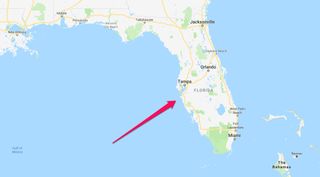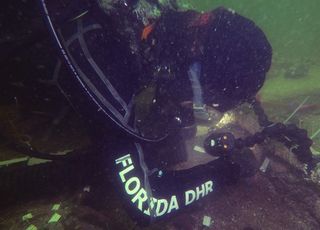Ancient Native American Burial Site Discovered Off the Coast of Florida

A 7,000-year-old Native American burial site has been discovered in the Gulf of Mexico, off the coast of Venice, Florida, state officials announced yesterday (Feb. 28).
The underwater site wasn't at the bottom of the ocean when it was created. The near-shore burial site was an inland "peat-bottomed freshwater pond thousands of years ago," before the fluid Florida coastline shifted as sea levels rose, according to a statement.
State officials stressed that they're taking pains to preserve the site. [In Photos: Human Skeleton Sheds Light on First Americans]
"Out of respect for the ancient people buried there and their living descendants, divers and other interested individuals are prohibited from disturbing the site. The site is protected under Florida law and it is illegal to excavate and/or remove any material or human remains from the site," according to a statement from the Florida Department of State’s Bureau of Archaeological Research.

Divers first discovered possible human skeletal material at the site in June 2016, according to the Florida Department of State, and reported the find to state archaeological officials for further study. Archaeologists believe the ancestors of indigenous Floridians buried their dead in the peat-lined bottom of the pond, which "remained intact" even after it was covered by the Gulf of Mexico, according to the statement.
Peat tends to preserve organic material, including human bodies. These "bog bodies" have turned up in old peat bogs all over the world — and sometimes they have been remarkably intact, even after as much as 4,000 years.
Florida officials said that further research at this burial site could reveal new information about ancient indigenous Floridians, and opens up the possibility of discovering more sites that haven't been destroyed by erosion and hurricanes.
Sign up for the Live Science daily newsletter now
Get the world’s most fascinating discoveries delivered straight to your inbox.
Originally published on Live Science.


